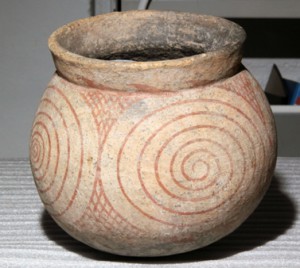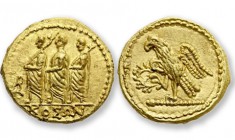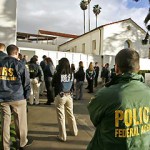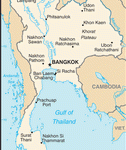Ban Chiang
Author: Neil Brodie
Last Modified: 20 Aug 2012

Ban Chiang is a badly looted archaeological site in north-east Thailand.
Ban Chiang is an archaeological site located on the Khorat plateau of Udon Thani province in north-east Thailand. It was occupied from about 3600 BC to 200 AD. It was first recognized as an archaeological site in 1960, with preliminary excavations conducted by the Thai Fine Arts Department in 1967 and 1972. Since then there have been a number of collaborative excavations and other investigations by the University of Pennsylvania Museum and the Fine Arts Department.
Occupants of the modern village of Ban Chiang (founded in the late eighteenth century AD) had long been aware of the archaeological site underneath their houses, but they did not start excavating material for sale until the early 1970s, when reports of the site reached wealthy Bangkok collectors and dealers (Gorman 1981, 1982; Lyons and Rainey, 1982). The villagers would sink shafts down to the required depth and then tunnel out, looking for the collectable red-on-buff decorated pottery that is found in iron-age burials, dating to the final centuries of the site’s occupation. Looting was at its height between 1970 and 1972, when material was being shipped out through the nearby US airbase at Udon (Thosarat 2001: 8). The local farmers are reported to have used the income derived from selling their finds for medical care and educating their children (Gorman 1982: 34).
Looting declined in the late 1970s, in part because of the presence of official archaeological excavation teams, and in part because of an Thai government decree passed in July 1972 making it illegal to buy, sell or export Ban Chiang pottery (though the site was already protected at the time by Thai antiquities legislation passed in 1961 (Thosarat 2001: 15-16)), and perhaps also because the most easily accessible graves had by then been exhausted. As a result, digging transferred to other sites in the region with a similar cultural assemblage. In 1982, University of Pennsylvania archaeologist Chester Gorman, who had worked at Ban Chiang, reported that in the previous five years of survey not one site had been discovered intact (Gorman 1982: 34). He also drew attention to the production of fake pottery in neighboring villages. Made from local materials, these fakes were indistinguishable from original pieces. Some were composites of old and new material (Gorman 1982: 32).
On 28 September 1990, Ban Chiang was inscribed on the UNESCO World Heritage List. The associated documentation claimed that looting had stopped at the site, but by 2001 it was clear that looting had recommenced at Ban Chiang and at other sites in the area, and that large quantities of material were reaching the United States (Thosarat 2001: 14). In 2008, several dealers and museums in southern California were raided by US federal agents on suspicion of selling and acquiring illegally-exported Ban Chiang pottery.
References
Gorman, Chester F. (1981), ‘A case history: Ban Chiang’, Art Research News, 1(2), 10-13.
Gorman, Chester F. (1982), ‘The pillaging of Ban Chiang’, Early Man, 4(3), 28-34.
Lyons, Elizabeth and Rainey, Froelich (1982), ‘The road to Ban Chiang’, Expedition, 24(4), 5-12.
Thosarat, Rachanie (2001), ‘The destruction of the cultural heritage of Thailand and Cambodia’, in Neil Brodie, Jennifer Doole and Colin Renfrew (eds.), Trade in Illicit Antiquities (Cambridge: McDonald Institute for Archaeological Research), 7-18.



